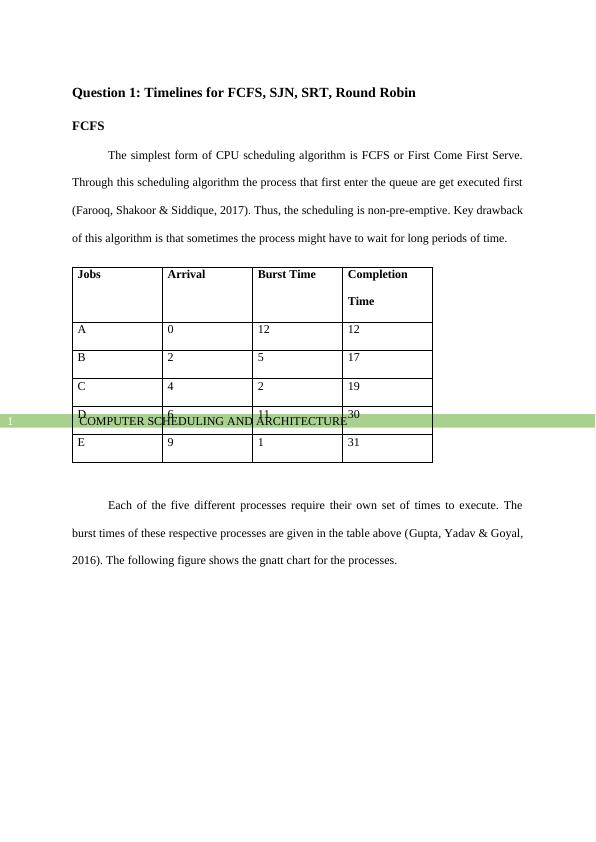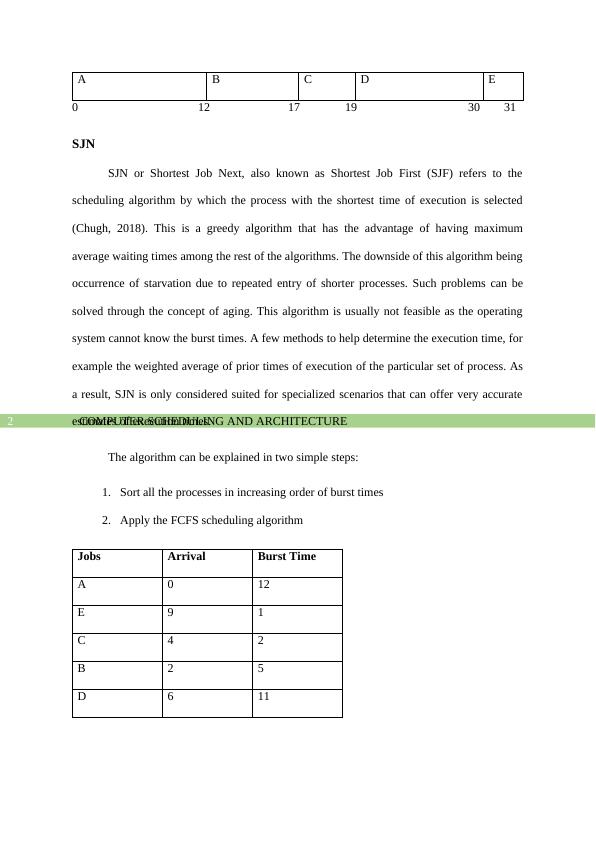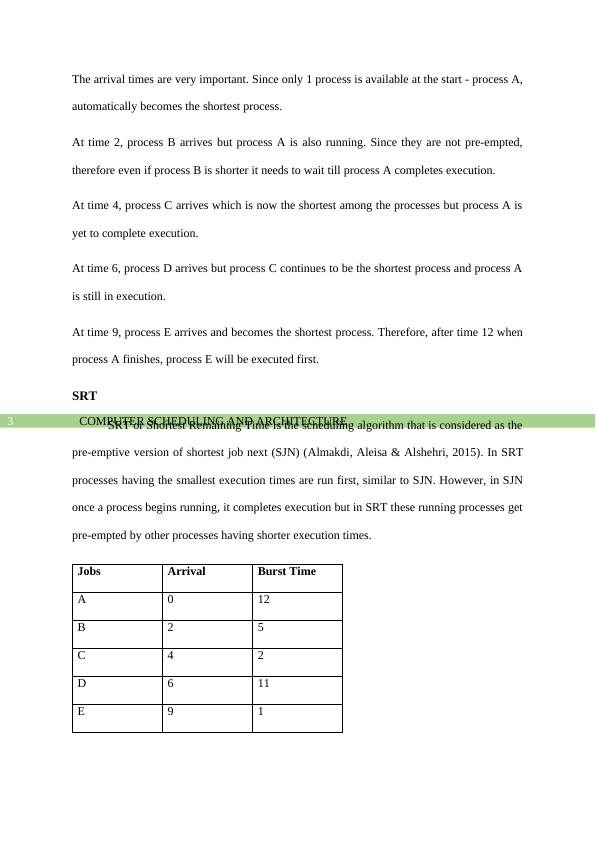Computer Scheduling and Architecture
This assessment requires students to analyze an operating system scenario, identify and understand synchronization and deadlocks, and provide options for resolving the problem and subsequent implications.
15 Pages2901 Words209 Views
Added on 2022-11-16
About This Document
This document explains different CPU scheduling algorithms like FCFS, SJN, SRT, Round Robin and their timelines. It also covers waiting time, turn around time, and deadlock prevention in a banking system. The resource graph is also analyzed in the document.
Computer Scheduling and Architecture
This assessment requires students to analyze an operating system scenario, identify and understand synchronization and deadlocks, and provide options for resolving the problem and subsequent implications.
Added on 2022-11-16
ShareRelated Documents
End of preview
Want to access all the pages? Upload your documents or become a member.
Operating System Assessment 2022
|18
|2440
|9
CPU Scheduling Algorithms and Deadlock Situations in Computer Organization and Architecture
|12
|2773
|238
Operating Systems
|6
|749
|406
System for Deterministic Modeling of CPU Scheduling Algorithms
|7
|766
|203
Operating System Principle : Assignment
|1
|272
|136
Ans a) Gantt charts.
|3
|251
|334




